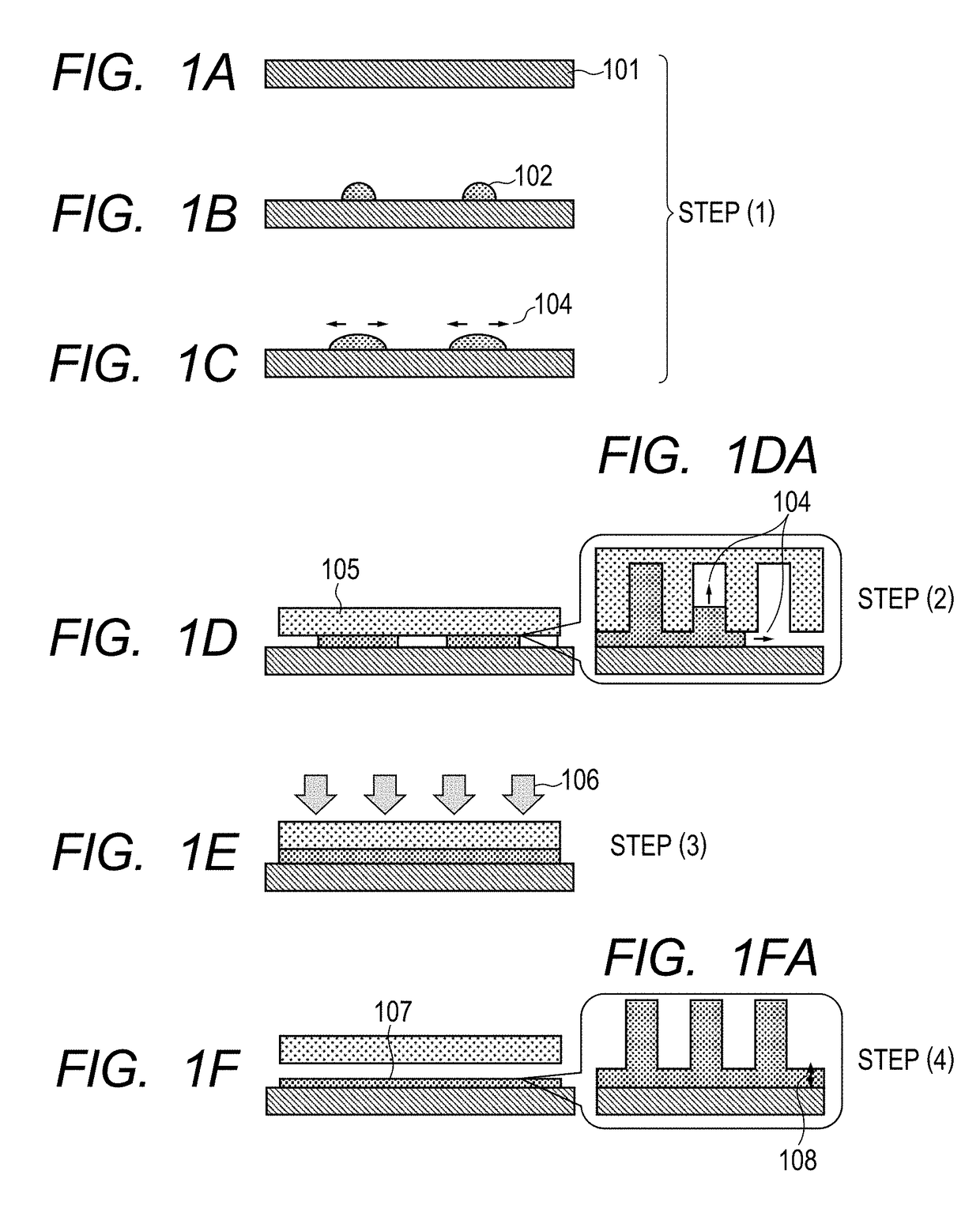Pattern forming method as well as production methods for processed substrate, optical component, circuit board, electronic component and imprint mold
- Summary
- Abstract
- Description
- Claims
- Application Information
AI Technical Summary
Benefits of technology
Problems solved by technology
Method used
Image
Examples
example 1
[0178](1) Preparation of Curable Composition (A1-1)
[0179]A component (a1), a component (b1), a component (c1), and a component (d1) described below were blended, and the blend was filtered with a 0.2-micrometer filter made of ultrahigh-molecular weight polyethylene to prepare a curable composition (A1-1) of Example 1.
(1-1) Component (a1):100parts by weight in totalTrimethylolpropane triacrylate100parts by weight(manufactured by Sigma-Aldrich,abbreviation: TMPTA):(1-2) Component (b1):0parts by weight in total
[0180]The component (b1) was not added.
(1-3) Component (c1)0 parts by weight in total
[0181]The component (c1) was not added.
(1-4) Component (d1):33,000parts by weight in totalPropylene glycol monomethyl ether33,000parts by weightacetate (manufactured by TokyoChemical Industry Co., Ltd.,abbreviation: PGMEA):
[0182](2) Preparation of Curable Composition (A2-1)
[0183]A component (a2), a component (b2), a component (c2), and a component (d2) described below were blended, and the blend ...
example 2
[0192](1) to (3) Curable Compositions (A1) and (A2)
[0193]The same compositions as that of Example 1 were used as a curable composition (A1) and (A2).
[0194](4) Discussion on Prespread Promoting Effect
[0195]It is hypothesized that the residual ratio of the component (d1) serving as a solvent in the film of the curable composition (A1-1) is 10 wt %. The surface tension of the film of the curable composition (A1-1) is 35.1 mN / m, and is higher than the surface tension of the curable composition (A2-1), i.e., 32.7 mN / m by 2 mN / m or more. Accordingly, a strong prespread promoting effect can be obtained.
[0196](5) Discussion on Pattern Formation Uniformity in Shot Region
[0197]Similarly, it is hypothesized that the residual ratio of the component (d1) serving as a solvent in the film of the curable composition (A1-1) is 10 wt %. The volatility of the component (a1) is low and an influence of the volatilization of the component (d1) serving as a solvent is slight. Accordingly, the Marangoni ef...
PUM
| Property | Measurement | Unit |
|---|---|---|
| Dynamic viscosity | aaaaa | aaaaa |
| Volume | aaaaa | aaaaa |
| Fraction | aaaaa | aaaaa |
Abstract
Description
Claims
Application Information
 Login to View More
Login to View More - R&D
- Intellectual Property
- Life Sciences
- Materials
- Tech Scout
- Unparalleled Data Quality
- Higher Quality Content
- 60% Fewer Hallucinations
Browse by: Latest US Patents, China's latest patents, Technical Efficacy Thesaurus, Application Domain, Technology Topic, Popular Technical Reports.
© 2025 PatSnap. All rights reserved.Legal|Privacy policy|Modern Slavery Act Transparency Statement|Sitemap|About US| Contact US: help@patsnap.com



